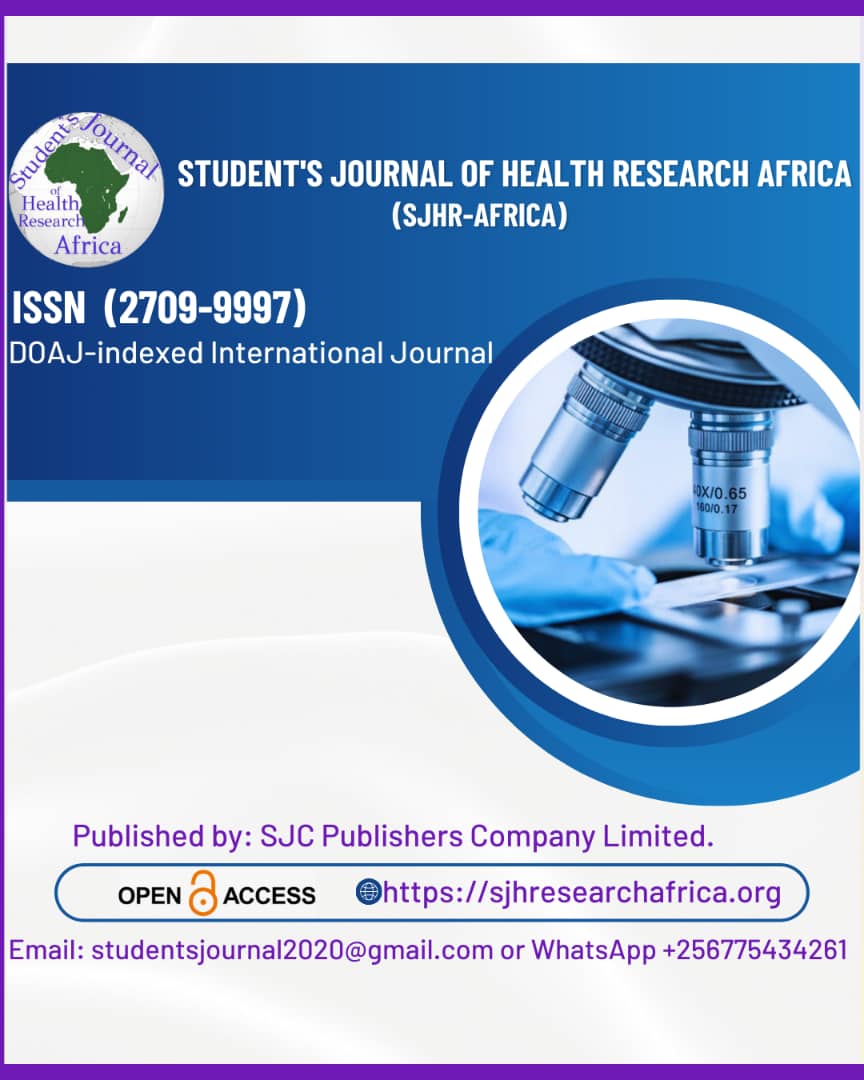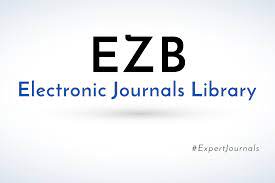Clinical profile of visual disturbances in alcohol abuse: A cross-sectional observational study in a forensic medicine unit.
DOI:
https://doi.org/10.51168/sjhrafrica.v6i9.2115Keywords:
Alcohol abuse, Visual disturbances, Ocular findings, Forensic medicineAbstract
Background:
Alcohol abuse is a major public health issue with significant neuro-ophthalmic implications. Visual disturbances are often underrecognized in chronic alcohol users, yet they may serve as important clinical markers of toxicity and chronic damage. This study aimed to evaluate the clinical spectrum and ocular findings associated with alcohol abuse in patients presenting to a forensic medicine unit.
Methods:
This observational study included 100 individuals with a history of alcohol abuse presenting with visual complaints. Demographic details, duration and pattern of alcohol use, presenting visual symptoms, and ocular examination findings were systematically documented. Descriptive statistics were applied to analyze the data, and results were expressed as frequencies and percentages.
Results:
The mean age of participants was 37.8 ± 9.4 years, with most cases in the 30–39 year group. Males predominated (82%). Chronic heavy alcohol use was reported in 64% of cases, with a mean duration of 8.1 ± 3.1 years. The most frequent symptoms were blurred vision (42%), diplopia (18%), photophobia (15%), and transient visual obscurations (12%). Less common complaints included reduced visual acuity (10%), color vision defects (2%), and visual hallucinations (1%). Ocular findings included conjunctival congestion (28%), nystagmus (16%), sluggish pupillary reflexes (14%), optic disc pallor (12%), hyperemia (8%), and retinal hemorrhages (5%). Seventeen percent of participants had normal ocular examinations despite subjective complaints.
Conclusion:
Visual disturbances are common among individuals with alcohol abuse. Both reversible and irreversible ocular changes were observed, highlighting the importance of early ophthalmic evaluation in this population.
Recommendations:
Routine ophthalmic screening should be integrated into de-addiction and rehabilitation programs. Multidisciplinary collaboration between ophthalmologists, psychiatrists, and forensic specialists is essential to prevent long-term visual morbidity.
References
Ahuja S, Kumar PS, Kumar VP, Kattimani S, Akkilagunta S. Effect of chronic alcohol and tobacco use on retinal nerve fibre layer thickness: a case-control study. BMJ Open Ophthalmol. 2016 Nov 21;1(1):e000003. Doi: 10.1136/bmjophth-2016-000003. PMID: 29354691; PMCID: PMC5759398. https://doi.org/10.1136/bmjophth-2016-000003
Karimi S, Arabi A, Shahraki T. Alcohol and the Eye. J Ophthalmic Vis Res. 2021 Apr 29;16(2):260-270. doi: 10.18502/jovr.v16i2.9089. PMID: 34055263; PMCID: PMC8126742. https://doi.org/10.18502/jovr.v16i2.9089
Peragallo J, Biousse V, Newman NJ. Ocular manifestations of drug and alcohol abuse. Curr Opin Ophthalmol. 2013 Nov;24(6):566-73. doi: 10.1097/ICU.0b013e3283654db2. PMID: 24100364; PMCID: PMC4545665. https://doi.org/10.1097/ICU.0b013e3283654db2
Grzybowski A, et al. Toxic optic neuropathies: an updated review. Acta Ophthalmologica. 2015;93(6):453-462. https://doi.org/10.1111/aos.12515
Liberski S, Kaluzny BJ, Kocięcki J. Methanol-induced optic neuropathy: a still-present problem. Arch Toxicol. 2022;96:431-451. https://doi.org/10.1007/s00204-021-03202-0
Donnadieu-Rigole H, Daien V, Blanc D, et al. The Prevalence of Optic Neuropathy in Alcoholic Patients - A Pilot Study. Alcohol Clin Exp Res. 2014;38(7):1939-1945. https://doi.org/10.1111/acer.12468
Baj J, Forma A, Kobak J, Tyczyńska M, Dudek I, Maani A, Teresiński G, Buszewicz G, Januszewski J, Flieger J. Toxic and Nutritional Optic Neuropathies-An Updated Mini-Review. International Journal of Environmental Research and Public Health. 2022; 19(5):3092. https://doi.org/10.3390/ijerph19053092
Sajjad Ali Surhio, Shahzad Memon, Muhammad Memon, et al. Alcohol Related Toxic Optic Neuropathy Case Series. Pak J Ophthalmol. 2013;29(3):173-179
Delibes, C., Ferré, M., Rozet, M. et al. Genetic susceptibility to optic neuropathy in patients with alcohol use disorder. J Transl Med 22, 495 (2024). https://doi.org/10.1186/s12967-024-05334-0
Romano F, Tarnutzer AA, Straumann D, Ramat S, Bertolini G. Gaze-evoked nystagmus induced by alcohol intoxication. J Physiol. 2017 Mar 15;595(6):2161-2173. doi: 10.1113/JP273204. Epub 2017 Jan 17. PMID: 27981586; PMCID: PMC5350443. https://doi.org/10.1113/JP273204
Isen DR, Streitenberger JH, et al. Neuro-ophthalmic manifestations of Wernicke encephalopathy. Eye Brain. 2020;12:119-129. https://doi.org/10.2147/EB.S234078
Liberski Sławomir, et al. Methanol-induced optic neuropathy: epidemiology, molecular and clinical perspectives. Arch Toxicol. 2022;96(2):431-451. https://doi.org/10.1007/s00204-021-03202-0
Illicit drugs: Effects on the Eye (Dhingra D, Kaur S, Jagat Ram). Indian J Med Res. 2019;150(6):528-538. https://doi.org/10.4103/ijmr.IJMR_1210_17
Alcalá Torres J, Sánchez Sánchez MC, Gracia-Miguel TG, Santos Martín C, Reche Sainz JA, Ferro Osuna M. Disulfiram-Induced Optic Neuropathy: Prognostic Factors, Literature Review and Comparison with Alcohol-Tobacco Induced Optic Neuropathy. Neuro-Ophthalmology. 2025;[Epub ahead of print]. https://doi.org/10.1080/01658107.2025.2538132
Downloads
Published
How to Cite
Issue
Section
License
Copyright (c) 2025 Dr. A. Kranti Kiran , Dr. Anumula Shireesha

This work is licensed under a Creative Commons Attribution-NonCommercial-NoDerivatives 4.0 International License.





















